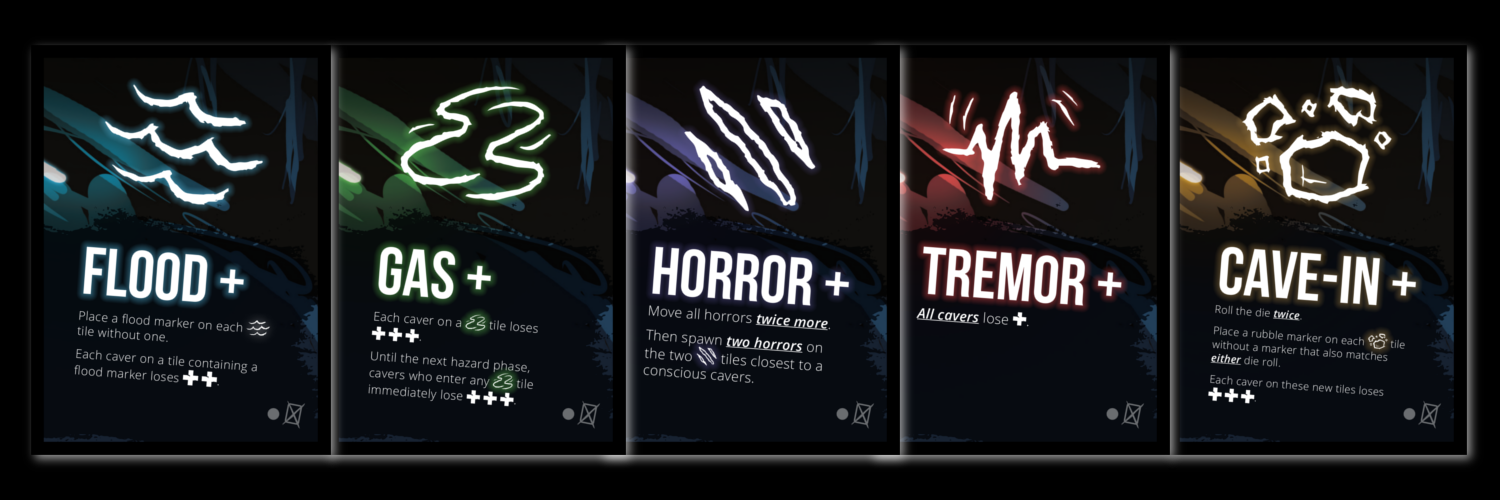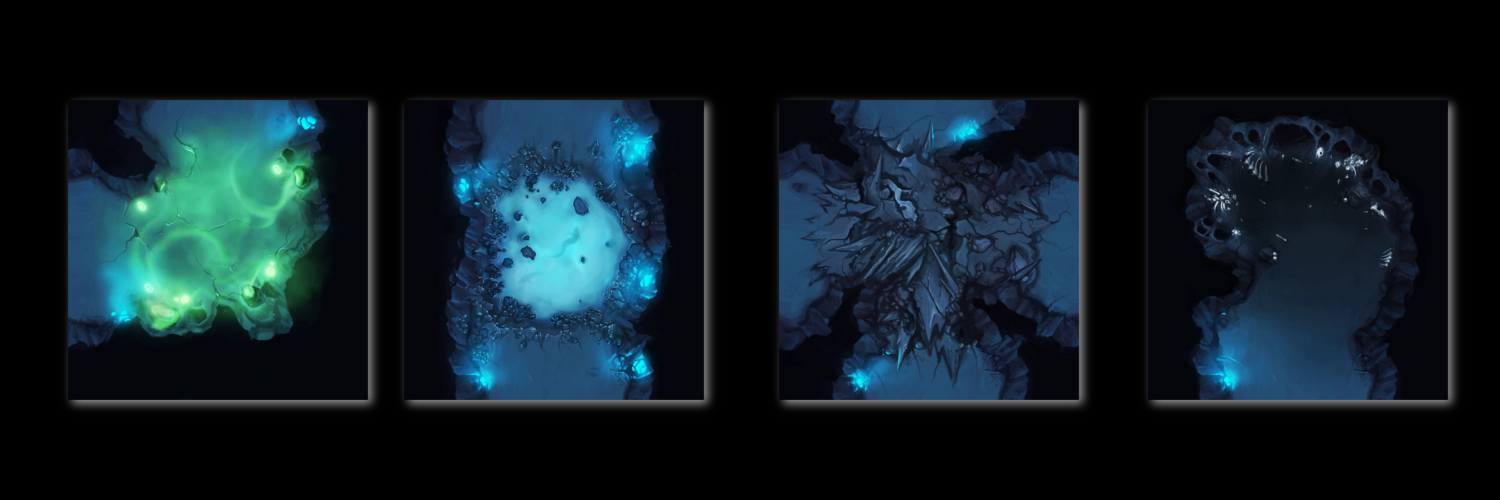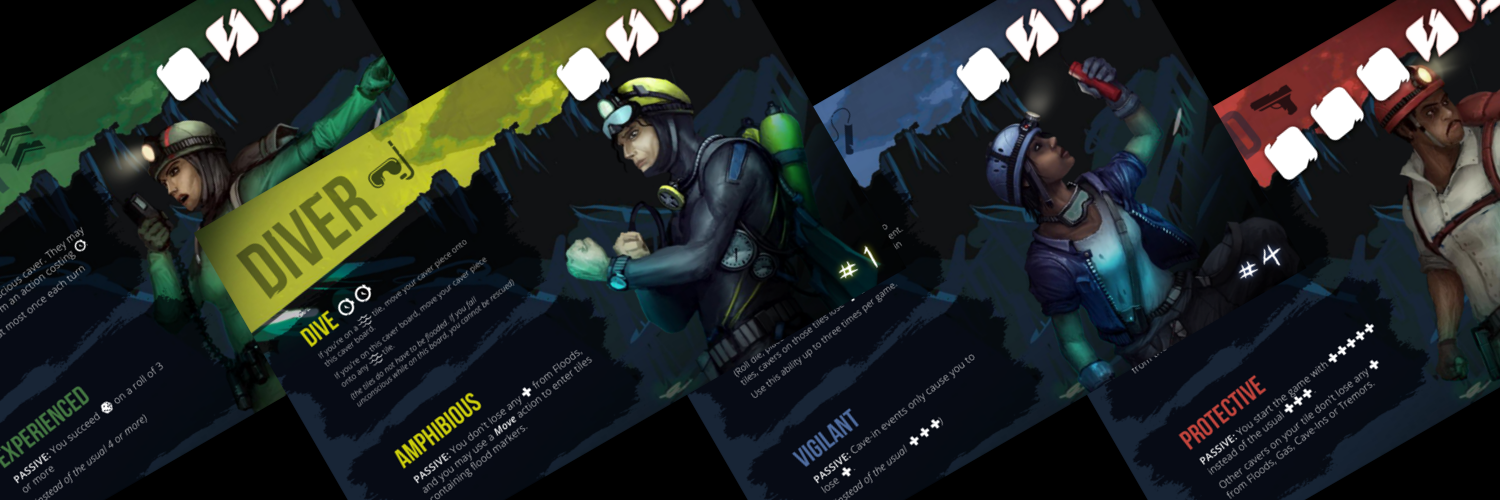Unearthing Darkness... our review of Sub Terra
- George E Ohh
- Jan 22, 2021
- 5 min read
Updated: Jan 14, 2024

Players: 1-6 Ages: 10+ Game Time: 60 mins
Happy Christmas to me! Yeah, it was inevitable as a board game lover that I would get at least one game for Christmas. This year it was Sub Terra from Inside the Box Games, a cooperative tile-laying game in which you are cavers trapped underground. You are searching for an exit before you run out of power for your flashlight, and get trapped with the horrors beneath our green Earth.
The game is advertised for 1-6 players and plays fairly quickly, with a round usually lasting about an hour. It's suggested suitable age of 10+ seems about right from our experience.
Originally launched via Kickstarter, there were many exclusive bonuses that I haven't got access to. However, they don't change the gameplay, so no issues there. This game was the winner of the UK Games Expo Best Euro Game Award in 2017, so I guess we'd best get digging and find out why...
*this is the collectors edition box with all the expansions and miniatures included.
Gameplay
So, let's talk about how you play Sub Terra. The objective of the game is to explore the cave network to get as many members of your team of specialist cavers out via the exit tile, once you have located it. Sounds simple enough, right?

But then you remember that caving is not easy at the best of times, and there are multiple hazards that you need to be wary of: difficult terrain, flooding, and even deadly gas!
Then you hear it, that sound in the darkness and you realise you're not alone down there... you will need to be careful of the horrors which lurk beneath, get caught by one and you might never get out.
So all panto aside, how do you play the game? You take turns with your specialist caver using one or two action points to carry out actions such as exploring the cave network. You can choose to exert yourself to get an extra action point each turn, but at the cost of potentially losing health and exposing yourself to the dangers of the cave. Various actions require you to roll the standard D6 in an action check where a roll of 4+ will succeed. Once all players have taken their actions you move the horrors closer to the nearest caver (or remove them if you are too far away) and resolve an event that can cause damage to your cavers... remember, we told you that caving was dangerous!
I mentioned earlier that it's 'advertised' for 1-6 players, while strictly true I wouldn't really agree with the statement as such. The game is designed for 4-6 players with lower player counts requiring players to play multiple characters. While this is something that I do quite often with other games it isn't really what I expect as the default rules and indeed would be too much for some people to manage at times.
In general, the gameplay isn't too onerous. However, there is quite a steep learning curve as we struggled to even beat the easiest difficulty without learning some handy tips and tricks. Some of this is largely down to what I think are some of the problems with this game...
The specialist cavers are very unbalanced. It's a common pitfall for many cooperative games, but I can't help feeling it particularly so in this game. The Geologist for example, with their passive ability to choose between two tiles, can allow you to progress through the game in relative safety, saving you those much-needed actions when you would otherwise be healing. There is also the Scout, who is immune to the horrors and can go off on their own without fear. Then of course comes the Bodyguard, whose massive health and passive safety to other characters makes everything so much simpler, and that's even before you give them the god-like power of making horrors vanish by just saying BOO!
So you are probably seeing by now that these unbalanced characters can really mean that the horrors, something which is supposed to represent a real threat to your 'heroes', really aren't a problem at all. And even worse, once you know how to play, you don't even need these epic cavers to avoid them altogether - by simply managing the game you make them pointless as they will also disappear when they are more than seven tiles away from the nearest 'targetable' caver, meaning that all you need to do to get rid of them is hide. So much for being a 'horror' I guess.

Production
The base game includes wooden meeples for each caver and a sticker sheet to put symbols on them, player boards, tokens for everything you need such as rubble and flood markers, as well as ropes and explosives. There are also pawns for the horrors which in my edition are stubby black cylinders with three red claw marks on them. And not forgetting the all-important rule book, and a standard D6.
The component quality is as expected for this type of game, and the artwork is fabulous and nicely detailed.

There are however some areas that bother me, and one of them is probably apparent already... the horror token. The game purports to have a horror theme but a stubby marker with a claw symbol ain't doing it for me. I know there are some nice miniatures available but, no offense, why pay £20 for six horror miniatures when they don't even feature that heavily in the game?
Similarly, the quality of the caver meeples is nice, but they really should have thought about the stickers more as some of these are barely visible due to the dark colours of the meeples. At times this makes it hard to tell them apart on the game board. So what should solve an accessibility problem for the colourblind is nothing more than useless. Again, there are miniatures available for your cavers. However, at £25 for a core set, the only reason I would buy these is that I like collectors' features like this.
This darkness extends further to the tiles, where I struggle at times to see how many openings there are on tiles as there isn't a huge differentiation between the walls and pathways. While I understand that this was probably a style choice, it doesn't excuse the effect it has on the game experience when you have to spend far too much time looking at a tile just to figure it out...
However, I fully understand why when you finally learn about one of the best production features of this game: the UV-sensitive paint. The stickers are UV sensitive, as well as highlighted areas on each tile that make it clear where the walls are. Now it makes sense; you turn your lights down and use a UV light and the theme of this game comes alive... I wonder why they don't promote this anywhere within the game itself and that I had to find this out myself?..
Conclusion
Overall, Sub Terra is a decent cooperative game and certainly has a good amount of replayability with the variation in tile types and characters. While we may have picked out and focused on some of the flaws within the review, I've thoroughly enjoyed my experience playing the game so far and look forward to playing it with the regular game group when we get a chance
The artwork is fabulous and the illustrator Diana Franco Campos has done a great job on this one. I just don't understand the decision not to advertise and shout about the UV features that actually help support the otherwise skin-deep theme in this game.

A solid game and a good cooperative experience, I would love to give it a better rating but there are too many things that need some work before it becomes the masterpiece it could have been.
Your friendly DoaLG rules lawyer
George E Ohh























Comments